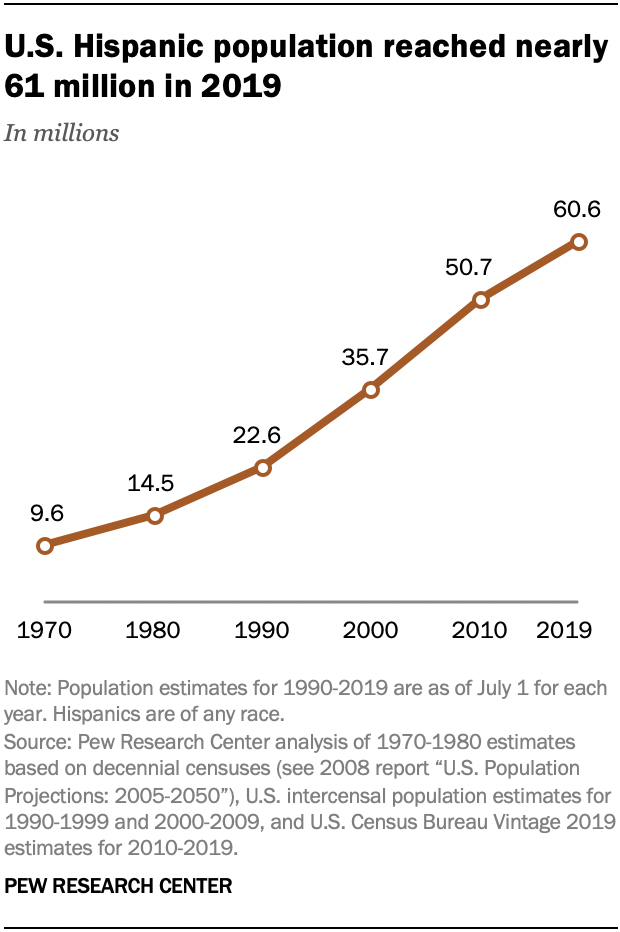
The U.S. Hispanic population reached a record 60.6 million in 2019, up 930,000 over the previous year and up from 50.7 million in 2010, according to newly released U.S. Census Bureau population estimates. Over the past decade, however, population growth among Hispanics has slowed as the annual number of births to Hispanic women has declined and immigration has decreased, particularly from Mexico.
Even so, Latinos remain an important part of the nation’s overall demographic story. Between 2010 and 2019, the Latino share of the total U.S. population increased from 16% to 18%. Latinos accounted for about half (52%) of all U.S. population growth over this period. They are the country’s second largest racial or ethnic group, behind white non-Hispanics.
Here are some key facts about how the nation’s Latino population has changed over the past decade.
How we did this
As part of our ongoing research of Hispanics in the United States, we examined the group’s population changes from 2010 to 2019 in the U.S. overall, as well as in the 50 states, the District of Columbia and Puerto Rico. The analysis is based on data from the U.S. Census Bureau’s population estimates. Vintage 2019 estimates for 2010-19 are the last before the 2020 census. All racial groups refer to single race, non-Hispanics.
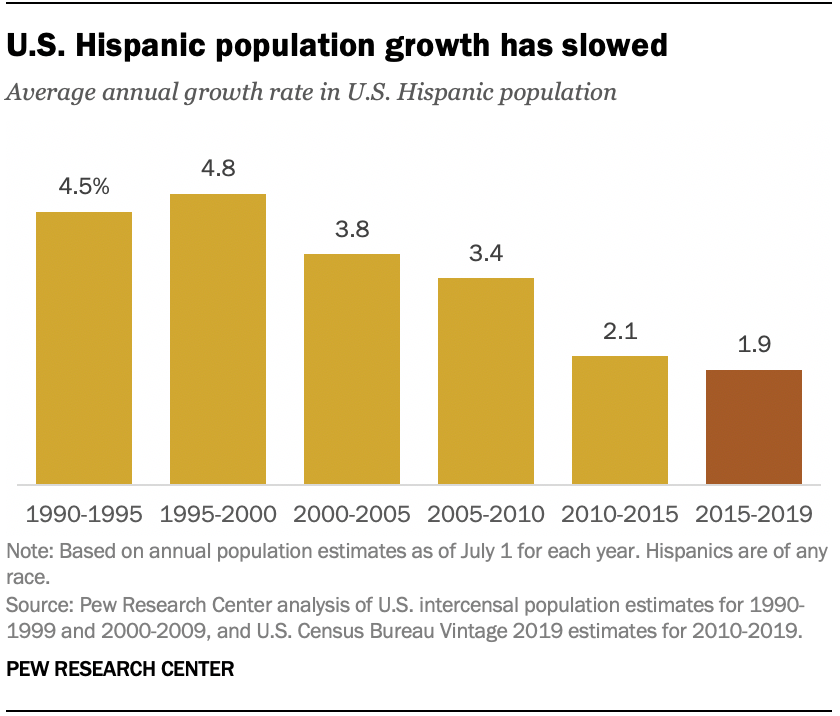
Population growth among U.S. Hispanics has slowed since the start of the decade. From 2015 to 2019, the nation’s Hispanic population grew by an average of 1.9% per year – similar to the 2.1% annual growth between 2010 and 2015, but down from annual growth of more than 3% in earlier years.
Despite the slowdown, population growth among Hispanics continues to outpace that of some other groups. The white population slightly declined, with an average growth rate that fell slightly below zero between 2015 and 2019, while the Black population grew by less than 1% per year over the same period. Only Asian Americans have seen faster population growth than Hispanics, increasing by 2.4% per year between 2015 and 2019. (All racial groups refer to single race non-Hispanics.)
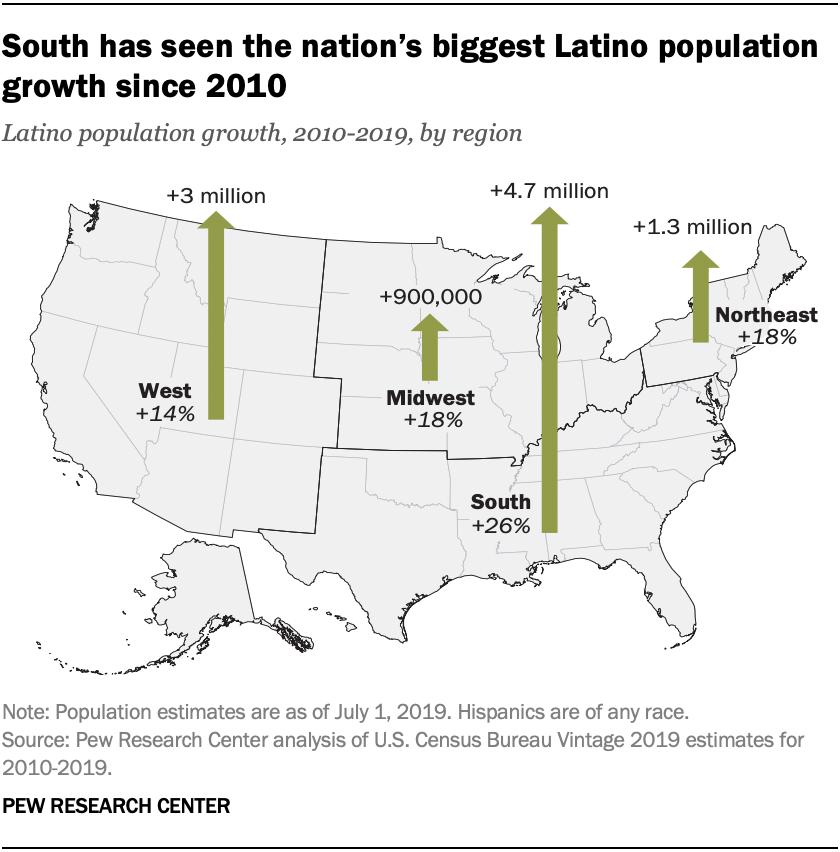
The Latino population grew faster in the South than in any other U.S. region since 2010. It increased by 26% from 2010 to 2019, rising from 18.3 million to 23.1 million. States in the Northeast (18% increase), Midwest (18%) and West (14%) also experienced growth in the number of Latinos from 2010 to 2019. Nationally, the Latino population has grown 19% since 2010, by 9.8 million people.
The states with the fastest Hispanic population growth tend to have a relatively small number of Hispanics – and are not in the South. North Dakota’s Hispanic population reached 31,500 in 2019, a 129% increase from 2010, the fastest increase of any state. However, the state ranked 48th out of the 50 states and the District of Columbia in its overall Hispanic population in 2019. The next fastest growth came in South Dakota (66%), Montana (50%), New Hampshire (48%) and the District of Columbia (42%), all of which had Hispanic populations of less than 80,000 in 2019.
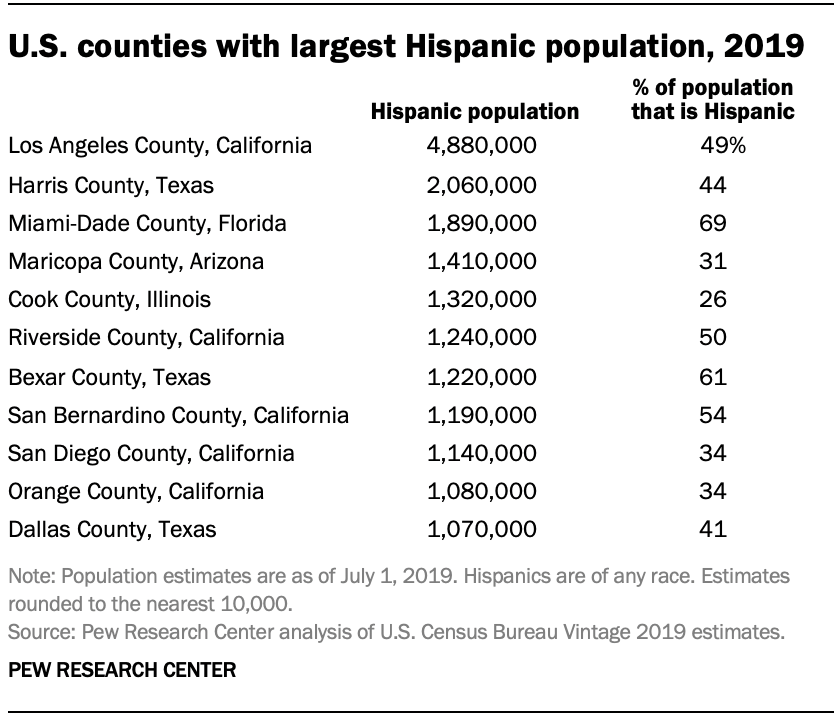
Los Angeles County had more Hispanics than any other U.S. county, with 4.9 million in 2019. The next largest Hispanic populations were in Harris County, Texas (2.1 million), and Miami-Dade County, Florida (1.9 million). Overall, 11 counties had more than a million Hispanics in 2019. These included Maricopa County, Arizona; Cook County, Illinois; and Riverside County, California. In 104 U.S. counties, Hispanics made up at least 50% of the population in 2019.
Latinos are among the youngest racial or ethnic groups in the U.S. but saw one of the largest increases in median age over the past decade. Latinos had a median age of 30 in 2019, up from 27 in 2010. Whites had the highest median age nationally – 44 in 2019, up from 42 in 2010. Asian and Black Americans had median ages of 38 and 35, respectively, and saw similar increases as whites in their median age since 2010.
Puerto Rico’s population stabilized in 2019 after several years of decline. The island’s population stood at 3.2 million in 2019, the same as in 2018. Puerto Rico’s population had steadily declined for about a decade, with its sharpest drops occurring in 2017 and 2018.
In 2017, Hurricanes Maria and Irma hit the island, leading many Puerto Ricans to leave for the 50 states and D.C., especially Florida. Even before the hurricanes, however, the island’s population had experienced a steady, long-term decline due to a long-standing economic recession.
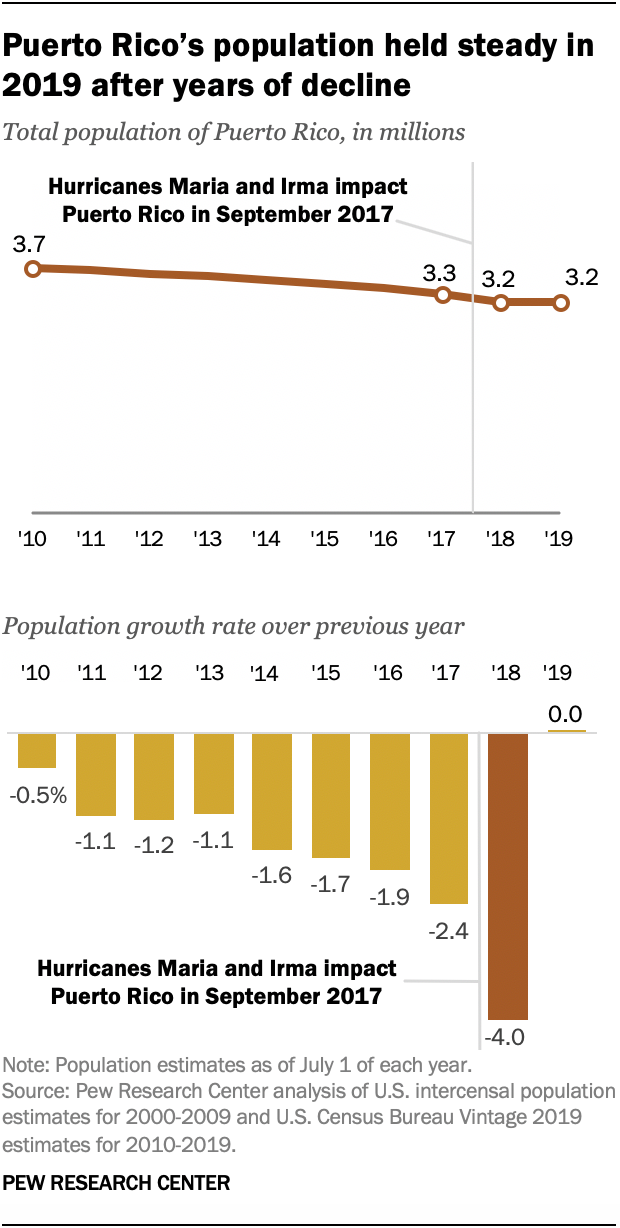
Note: This is an update of a post originally published July 8, 2019.


